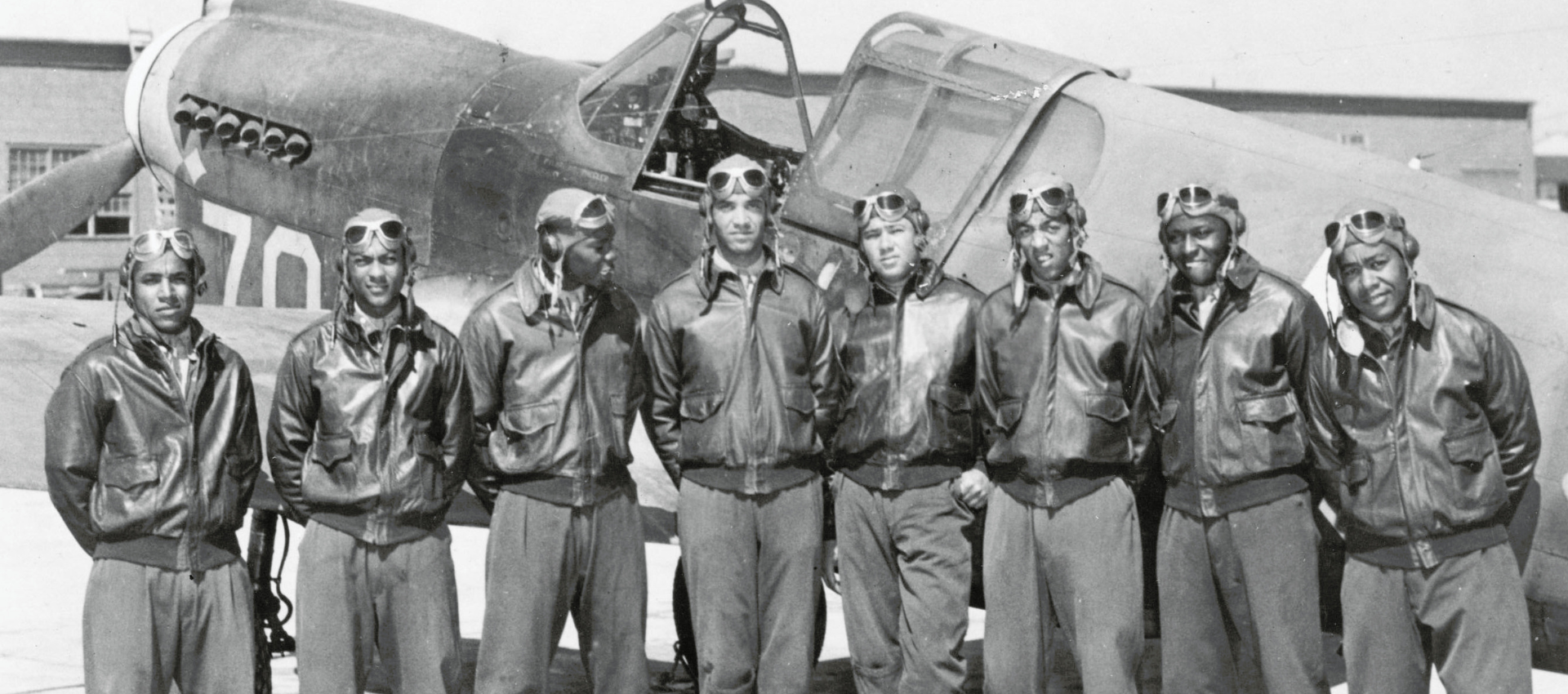Honoring African American Pioneers
February is Black History Month, a time to honor the contributions and legacy of African Americans. This month is set aside as an annual celebration of achievements of African Americans to recognize their role in U.S. history.
Read on to learn the stories and legacies of African American trailblazers and inspirational aviators who helped pave the way for many others.
Aviation Pioneers
Tuskegee Airmen
First African American military aviators in the U.S. Army Air Corps.
African Americans were not given the option to become pilots until President Franklin D. Roosevelt announced the civilian pilot training program in 1938. Despite this civilian program, segregation remained throughout the military, and African American pilots were still prohibited from flying in the U.S. armed forces.
In 1941, an African American pursuit squadron based in Tuskegee, Alabama, was formed and named the Tuskegee Airmen. Despite extreme racism, the Tuskegee program trained about 1,000 African American pilots and 14,000 African American navigators, bombardiers, instructors, aircraft and engine mechanics, control tower operators, and other maintenance and support staff.
The Tuskegee Airmen overcame segregation and prejudice to fight for their country, becoming one of the most highly respected fighter groups of World War II and pioneers of Black military aviation. Their dedication to defending the freedom of all Americans paved the way for the full integration of the U.S. military.
Bessie Coleman
First African American Women to hold a pilots license and first African American to obtain an international license to fly.
Born in 1892, Bessie Coleman grew up with 12 siblings in Waxahachie, Texas, where she helped her mother pick cotton and wash laundry for extra money. But her humble beginnings didn’t stop her from dreaming big.
Determined to become a pilot, Bessie applied to flight schools across the country, but was denied because she was both African American and a woman. She refused to take no for an answer and instead, applied to a flight school in France, Federation Aeronautique Internationale. She was accepted into the program on June 15, 1921. Upon receiving her international pilot’s license, Bessie Coleman made history – in more ways than one – becoming the first African American woman pilot, as well as the first African American to obtain an international license to fly.
Bessie’s continued her journey by touring the country giving speeches, flight lessons, and performing in flight shows to inspire other young African American women to learn to fly.
During a time of rampant racial and gender discrimination, Bessie became an aviation pioneer. Her story continues to inspire people to reach for their dreams, even when faced with extreme adversity.
Eugene J. Bullard
First African American military combat pilot.
Eugene was born in 1895 in Columbus, Georgia, and ran away when he was just 11. He stowed away on a flight to Scotland when he was 17, moving around for a while but eventually settling in France.
When World War I broke out, he enlisted in the French Foreign Legion and was injured in the Battle of Verdun. While on leave Bullard made a $2,000 bet with a friend that despite his skin color he would enlist in the French flying service. His determination paid off; he entered the Aeronautique Militaire in November of 1916 and received his wings in May of 1917. Eugene J. Bullard is the first African American military pilot to fly in combat.
Over the course of his career he claimed two aerial victories (unconfirmed). After the United States entered the war in 1917, Bullard attempted to join the U.S. Air Service, but was rejected.
Pearl Harbor Hero
Doris Miller
Recognized as one of the first U.S. heroes of World War II.
On the morning of December 7, 1941 Doris Miller had just served breakfast and was collecting laundry aboard the moored USS West Virginia when the attack on Pearl Harbor began. Upon reporting to his battle station, Miller discovered it had been destroyed by a torpedo. Following protocol, Miller reported himself available and the communications officer, LT. Commander DC Johnson, ordered him to assist in moving the ship’s captain who had been injured. The Captain, with the help of Miller, was transferred to a sheltered spot on the deck where he continued to give orders and instructions to crew members until he passed away.
Miller was then ordered to help load anti-aircraft machine guns on deck, which were unmanned at the time. Miller began firing one of the guns at enemy aircraft. He is officially credited with downing two enemy planes.
Doris Miller is recognized as one of the first US heroes of World War II and was awarded the Navy Cross for his outstanding service aboard the USS West Virginia during the attack.


